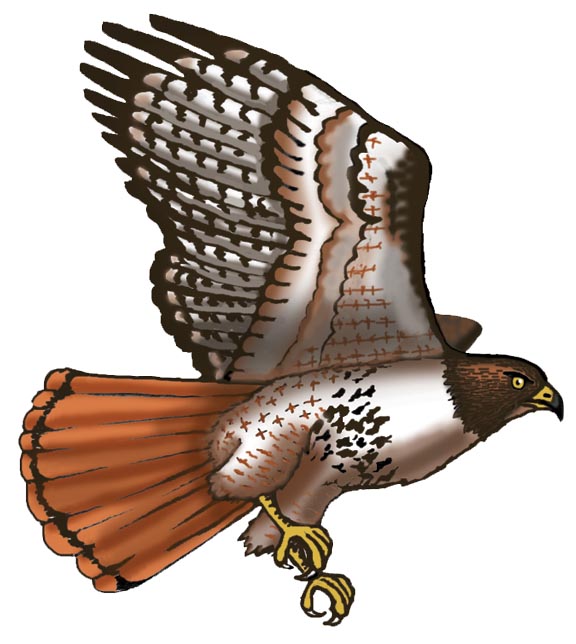

They are found in Alaska through Canada and the U.S. down to Mexico.
They are the most common hawk in North America. They like open country where they can hunt. They perch on top of tall signs or power poles to watch for prey.
They are more than 2 feet tall, dark on top and lighter underneath with a dark band across their chest. They have a wide, red tail with a dark stripe across the bottom. Males and females look alike.
They have a loud screaming call.
They eat small mammals.
They make a nest of sticks lined with twigs and bark in a tree or on a cliff. The female lays 1-5 white eggs with brown patches.
Kingdom: Animalia
Phylum: Chordata
Subphylum: Vetebrata
Class: Aves
Order: Falconiformes
Family: Accipitridae
Subfamily: Accipitrinae
Genus: Buteo
Species: B. jamaicensis
When you research information you must cite the reference. Citing for websites is different from citing from books, magazines and periodicals. The style of citing shown here is from the MLA Style Citations (Modern Language Association).
When citing a WEBSITE the general format is as follows.
Author Last Name, First Name(s). "Title: Subtitle of Part of Web Page, if appropriate." Title: Subtitle: Section of Page if appropriate. Sponsoring/Publishing Agency, If Given. Additional significant descriptive information. Date of Electronic Publication or other Date, such as Last Updated. Day Month Year of access < URL >.
Amsel, Sheri. "Hawk (Red-tailed)" Exploring Nature Educational Resource ©2005-2024. December 13, 2024
< http://www.exploringnature.org/db/view/177 >

